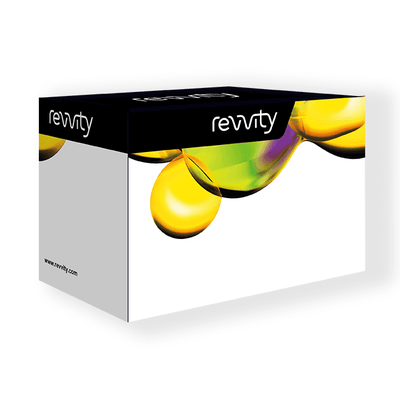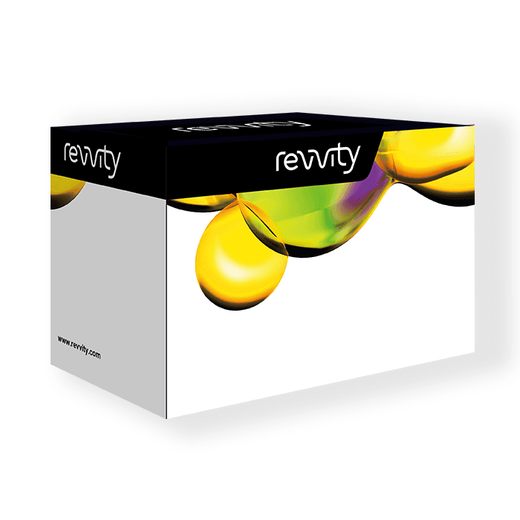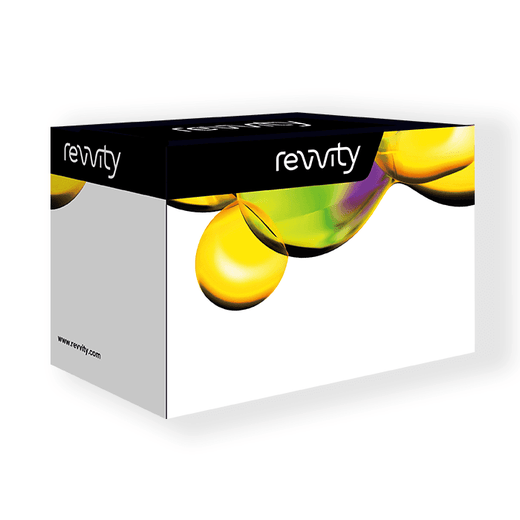

HTRF Human & Mouse Total IRS2 Detection Kit, 500 Assay Points


HTRF Human & Mouse Total IRS2 Detection Kit, 500 Assay Points






The total IRS2 assay enables the detection of cellular IRS2 and can be used as a normalization assay for the phospho-IRS2 kit.
For research use only. Not for use in diagnostic procedures. All products to be used in accordance with applicable laws and regulations including without limitation, consumption and disposal requirements under European REACH regulations (EC 1907/2006).
| Feature | Specification |
|---|---|
| Application | Cell Signaling |
| Sample Volume | 16 µL |
The total IRS2 assay enables the detection of cellular IRS2 and can be used as a normalization assay for the phospho-IRS2 kit.
For research use only. Not for use in diagnostic procedures. All products to be used in accordance with applicable laws and regulations including without limitation, consumption and disposal requirements under European REACH regulations (EC 1907/2006).



HTRF Human & Mouse Total IRS2 Detection Kit, 500 Assay Points



HTRF Human & Mouse Total IRS2 Detection Kit, 500 Assay Points



Product information
Overview
Insulin receptor substrates (IRS) 1 and 2 are the primary substrates of Insulin/IGF1 receptors, and mediate cell growth/survival and metabolic homeostasis. While IRS1 is primarily found in adipose tissue, IRS2 is the predominant form in pancreatic-beta cells and the central nervous system (CNS). Decreased IRS2 levels are associated with diabetes and neurodegeneration, whereas highly overexpressed levels of IRS2 drive tumor motility and invasion. This cell-based assay measures the modulation of IRS2 protein levels.
Specifications
| Application |
Cell Signaling
|
|---|---|
| Brand |
HTRF
|
| Detection Modality |
HTRF
|
| Lysis Buffer Compatibility |
Lysis Buffer 1
Lysis Buffer 4
Lysis Buffer 5
|
| Molecular Modification |
Total
|
| Product Group |
Kit
|
| Sample Volume |
16 µL
|
| Shipping Conditions |
Shipped in Dry Ice
|
| Target Class |
Phosphoproteins
|
| Target Species |
Human
Mouse
|
| Technology |
TR-FRET
|
| Therapeutic Area |
Metabolism/Diabetes
Neuroscience
Oncology & Inflammation
|
| Unit Size |
500 Assay Points
|
Video gallery

HTRF Human & Mouse Total IRS2 Detection Kit, 500 Assay Points

HTRF Human & Mouse Total IRS2 Detection Kit, 500 Assay Points

How it works
Total IRS2 assay principle
The total IRS2 assay quantifies the expression level of IRS2 in a cell lysate. Contrary to Western Blot, the assay is entirely plate-based and does not require gels, electrophoresis or transfer. The Total-IRS2 assay uses two labeled antibodies: one coupled to a donor fluorophore, the other to an acceptor. Both antibodies are highly specific for a distinct epitope on the protein. In presence of IRS2 in a cell extract, the addition of these conjugates brings the donor fluorophore into close proximity with the acceptor and thereby generates a FRET signal. Its intensity is directly proportional to the concentration of the protein present in the sample, and provides a means of assessing the proteins expression under a no-wash assay format.

Total IRS2 2-plate assay protocol
The 2 plate protocol involves culturing cells in a 96-well plate before lysis then transferring lysates to a 384-well low volume detection plate before adding total IRS2 HTRF detection reagents. This protocol enables the cells' viability and confluence to be monitored.

Total IRS2 1-plate assay protocol
Detection of total IRS2 with HTRF reagents can be performed in a single plate used for culturing, stimulation and lysis. No washing steps are required. This HTS designed protocol enables miniaturization while maintaining robust HTRF quality.
Assay validation
IRS2 upregulation in INS-1E beta rat cells using glucose and forskolin
INS-1E cells were plated in a 24-well plate and cultured for 4 days. A starvation step using Krebs Ringer Buffer (KRB) without glucose was performed for 1 hour before stimulating the cells with glucose +/- forskolin (diluted in culture medium without glucose). After 6 hours of treatment, the medium was removed and cells were lysed and transferred into a 384-well low volume white microplate with HTRF total IRS2 detection reagents added. The HTRF signal was recorded after an overnight incubation.


Upregulation of IRS2 protein levels in HEK293 human embryonic kidney cells using forskolin
HEK293 cells were plated at 100,000 cells/well in a 96-well plate, and incubated for 24 hours at 37°C, 5% CO2. After treatment for 30 minutes or 4 hours with 1 nM forskolin, the medium was removed and cells were lysed with 50 µL of supplemented lysis buffer #1 for 30 minutes at RT under gentle shaking. 16 µL of lysate were then transferred into a 384-well low volume white microplate and 4 µL of the HTRF total IRS2 detection reagents were added. The HTRF signal was recorded after an overnight incubation.

Detection of IRS2 in SH-SY5Y human neuroblastoma cell line
SH-SY5Y cells were plated in a 6-well plate at two different cell densities (2 million and 4 million cells/well) and incubated for 24 hours at 37°C, 5% CO2. The medium was then removed and cells were lysed with 200 µL of supplemented lysis buffer #1 for 30 minutess at RT under gentle shaking. 16 µL of lysate were transferred into a 384-well low volume white microplate and 4 µL of the HTRF total IRS2 detection reagents were added. The HTRF signal was recorded after an overnight incubation.

Detection of IRS2 in MCF-7 human breast cancer cell line
MCF-7 cells were plated in a 96-well plate at 100,000 cells/well and incubated for 24 hours at 37°C, 5% CO2. The medium was then removed and cells were lysed with 50 µL of supplemented lysis buffer #1 for 30 minutes at RT under gentle shaking. 16 µL of lysate were transferred into a 384-well low volume white microplate and 4 µL of the HTRF total IRS2 detection reagents were added. The HTRF signal was recorded after an overnight incubation.

Simplified pathway
Function and regulation of IRS2 in pancreatic ß-cells
IRS2 expression in pancreatic-beta cells by both 2nd messengers: glucose and GLP-1. These promote activation of transcription factor CERB leading to increased IRS2 expression. IRS2 is crucial to functional Insulin/IGF-1 signaling, promoting beta-cell growth, survival and function. Pro-inflammatory adipocytokines, free fatty acids and cellular stress promote IRS2 degradation and contribute to spontaneous beta-cell apoptosis, decreased beta-cell mass, insulin deficiency and eventually metabolic disorders such as diabetes.

Resources
Are you looking for resources, click on the resource type to explore further.
Discover the versatility and precision of Homogeneous Time-Resolved Fluorescence (HTRF) technology. Our HTRF portfolio offers a...


How can we help you?
We are here to answer your questions.






























